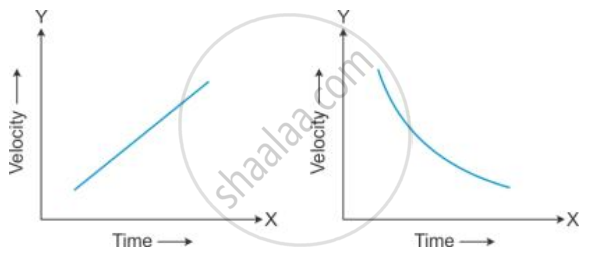Advertisements
Advertisements
Question
A racing car is moving with a velocity of 50 m/s. On
applying brakes, it is uniformly retarded and comes to rest in 20 seconds. Calculate its acceleration.
Solution
Initial velocity of car = u = 50 m/s
Final velocity of car = v = 0 .......[∵ As car comes to rest]
Time = t = 20s
Acceleration = a = ?
v = u + at
0 = 50 + a(20)
−20a = 50
a = `(-50)/20` = −2.5 ms−2
APPEARS IN
RELATED QUESTIONS
State the type of motion represented by the following sketches in Figures.

Give an example of each type of motion.
A car travels with uniform velocity of 25 m s-1 for 5 s. The brakes are then applied and the car is uniformly retarded and comes to rest in further 10 s. Find:
- The distance which the car travels before the brakes are applied,
- Retardation and
- The distance travelled by car after applying the brakes.
When is the acceleration due to gravity positive?
Give an example of an accelerated body, moving with a uniform speed.
A cyclist driving at 5 ms−1, picks a velocity of 10 ms−1, over a distance of 50 m. Calculate
- acceleration
- time in which the cyclist picks up above velocity.
Define acceleration.
Convert the following acceleration:
7200 km/h2 into m/s2
The graph shows how the velocity of a scooter varies with time in 50 s.
Work out: Acceleration.
The value of acceleration for a body at rest is ______.
Acceleration is a scalar.
